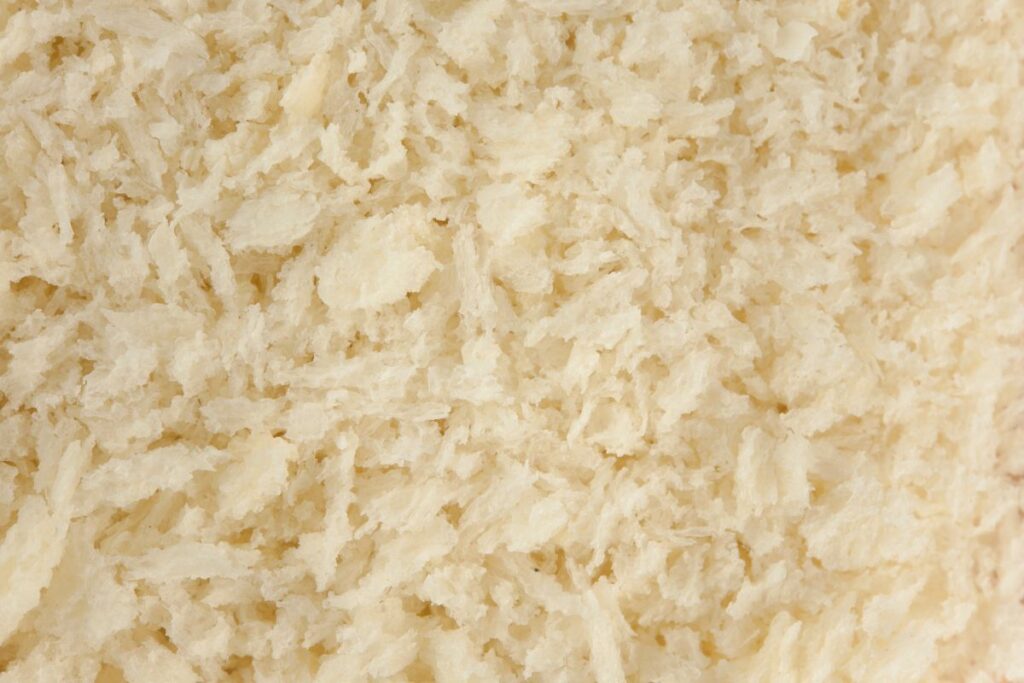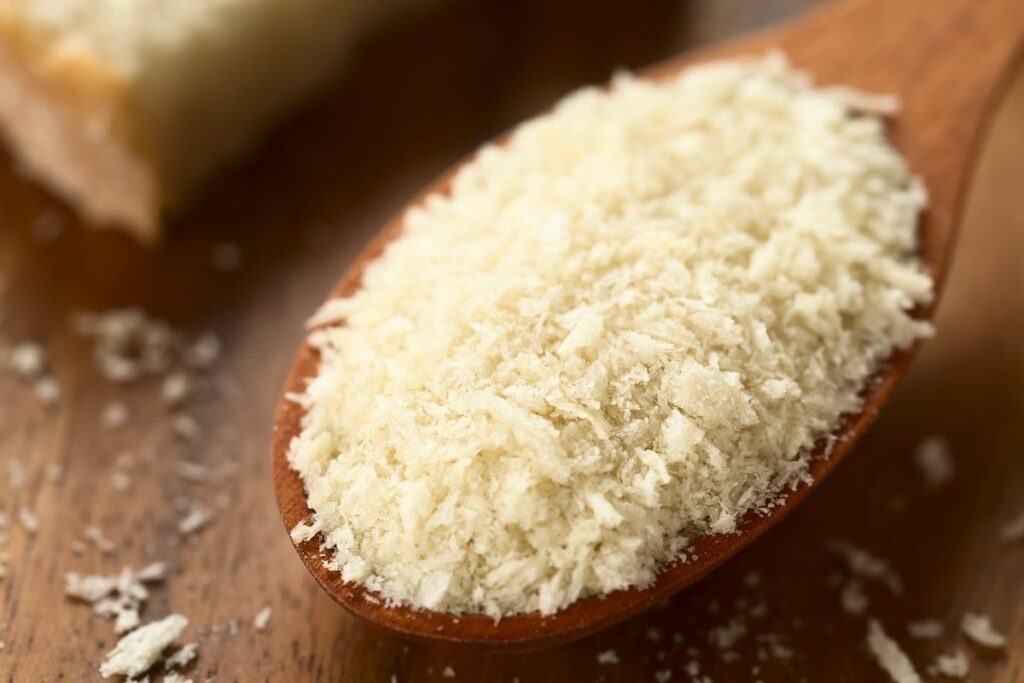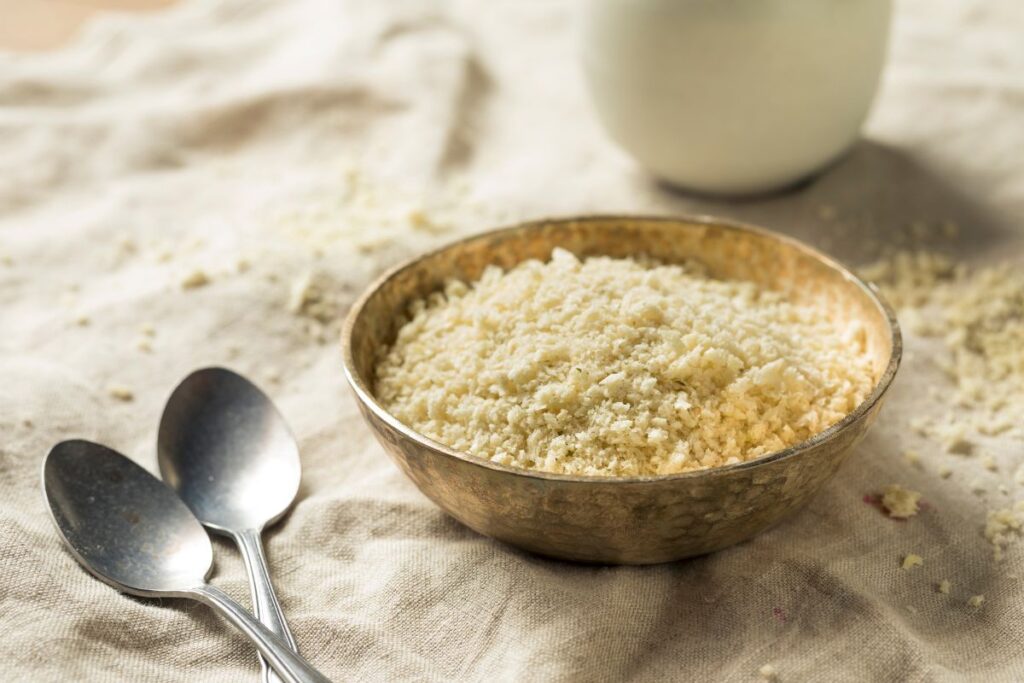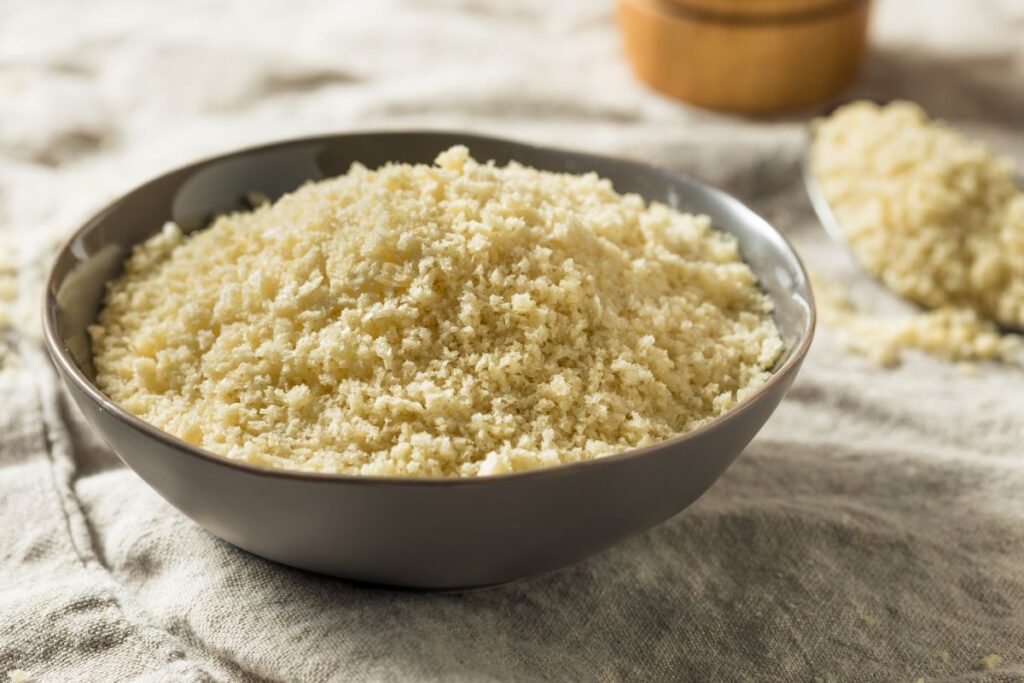Have you ever wondered how chefs achieve that perfect, crispy exterior on their fried dishes? It’s like an adventure in texture, where every bite is a delightful crunch.
Well, the secret lies in a humble ingredient: panko bread crumbs. Originating from Japan, panko has become a game-changer in the culinary world, with its unique texture and ability to absorb less oil.
Whether it’s crispy chicken or crunchy vegetable tempura, panko is the key to achieving that irresistible crunch without the heaviness often associated with fried foods.
Join us as we explore the origins of panko, learn how it’s made, and discover its versatile applications in cooking. Prepare to be inspired and uncover the secrets behind some of your favorite crispy delights.


The Origins of Panko Bread Crumbs
Panko bread crumbs, renowned for their light, airy texture, originated in Japan, where chefs sought a superior coating for fried foods. These chefs, much like you, weren’t satisfied with the status quo.
They demanded a breadcrumb that wouldn’t just absorb oil and turn soggy. They craved something that would elevate their dishes with a crunch that lasts.
You see, in your quest for culinary perfection, understanding the roots of panko gives you an edge. You’re in control here, choosing panko means you’re opting for a breadcrumb that’s crafted through a unique process.
Unlike traditional breadcrumbs, panko is made from bread baked by electrical current, which yields an exceptionally crispy, airy texture. This method, a clever innovation by Japanese chefs, ensures that when you coat your foods with panko, they fry up lighter and crunchier.
Making Panko Bread Crumbs
Having explored the unique origins of panko bread crumbs, let’s now turn our attention to how they’re made, putting you one step closer to achieving that unmatched crispy coating in your own kitchen.
The process is surprisingly simple, yet distinct, setting panko apart from its western counterparts.
First, you’ll need white bread, preferably without crusts, to mimic the authentic method. The bread is then processed into coarse flakes.
This is where control comes in; the size of these flakes is crucial. Too small, and you’ll lose that airy texture panko is renowned for. Too large, and your food won’t coat evenly.
Next, the flakes are dried, but not in the way you might expect. Instead of baking, they’re electrocuted, a unique method that prevents the bread from browning and ensures that airy, light texture that makes panko stand out.
If you’re trying this at home, a low oven or a dehydrator can be a good stand-in for this step.


Panko Vs. Regular Bread Crumbs
When comparing panko to regular breadcrumbs, you’ll notice a distinct difference in texture and crispiness that can elevate your fried foods to a new level.
Panko crumbs are larger, lighter, and flakier, creating a crisper coat that’s hard to achieve with the finer, denser texture of traditional breadcrumbs. This isn’t just about preference; it’s about understanding how these differences impact your cooking outcomes.
You’ve got the power to choose the right tool for the job. Opting for panko means your fried foods will absorb less oil, resulting in a lighter, airier bite that’s irresistibly crunchy.
It’s not just about the aesthetic or texture; it’s about making a conscious decision to enhance the overall eating experience while possibly making a healthier choice.
In contrast, regular breadcrumbs might impart a heavier, more bread-like coating that can overwhelm delicate flavors. They’re better suited for dishes where a dense, uniform crust is desired, like meatballs or stuffed mushrooms.
Cooking Techniques With Panko
Understanding the unique qualities of panko compared to regular breadcrumbs, let’s explore how you can masterfully use them in your cooking techniques.
First, to achieve that unparalleled crispiness, you’ll want to shallow fry or deep fry your panko-coated items. The light, airy texture of panko absorbs less oil, making your dishes less greasy.
Here’s a pro tip: before coating your chicken, fish, or vegetables in panko bread crumbs, make sure to dredge them in flour and then dip them in beaten eggs. This process ensures the panko sticks better, creating a more uniform crust that’s less prone to falling off during cooking.
Another technique to maximize crispiness is to toast your panko before use. Simply spread it out on a baking sheet and lightly toast it in the oven. This step brings out a nuttier flavor and ensures an even golden-brown finish on your final dish.


Creative Panko Recipes
Let’s dive into some creative recipes that showcase panko’s versatility beyond the traditional fried foods.
First up, imagine transforming your morning avocado toast by adding a crispy panko crust. Simply mix panko with some grated Parmesan, press the mixture onto sliced avocado, and broil until golden. You’ve now elevated a simple breakfast to a crunchy, savory delight.
Next, take control of your snack game with panko-crusted baked mozzarella sticks. Wrap string cheese in wonton wrappers, dip in beaten egg, then roll in seasoned panko.
Bake until the cheese is gooey and the crust is perfectly crisp. It’s a homemade version you can tweak to perfection, bypassing the frozen aisle.
For a dinner that impresses, create a panko-crusted salmon that’s crispy on the outside and tender on the inside. Mix panko with a little olive oil and your favorite herbs, press onto the salmon fillets, and bake.
This method ensures you’re in charge of the flavors and the texture, turning a simple fish dinner into a crispy masterpiece.
Each of these recipes lets you wield the power of panko to transform the ordinary into the extraordinary, proving its value beyond just frying.
Conclusion
Now that you’re clued into the crispy magic of panko bread crumbs, it’s your turn to elevate your fried dishes.
Some may argue that panko is just another trendy ingredient that doesn’t really make a difference in the final result. But hey, don’t just take my word for it! I invite you to try it out for yourself and leave a comment below to share your thoughts.
From classic Japanese recipes to your own kitchen experiments, panko’s light, airy texture can transform the mundane into the extraordinary.
So, go ahead, get creative, and let panko be the secret ingredient that makes your fried foods unforgettable.




Konnichiwa! (Hello!) I'm Pat Tokuyama, a Japanese tofu cookbook author, who travels for music, food, and adventure. If you like Japanese tea, checkout some of the newestorganic japanese tea, matcha bowls and noren and more!
** Curious about the Plant Based Japanese Cooking Club? ** Learn more here!